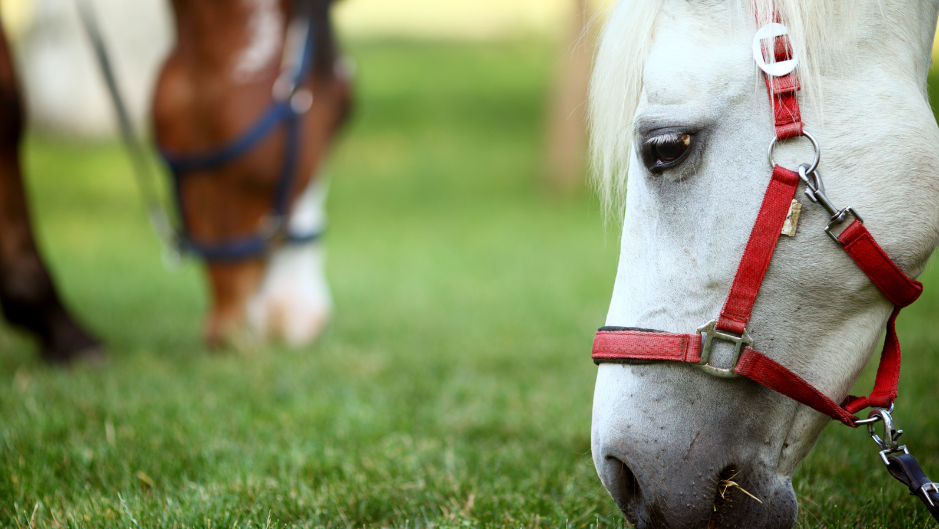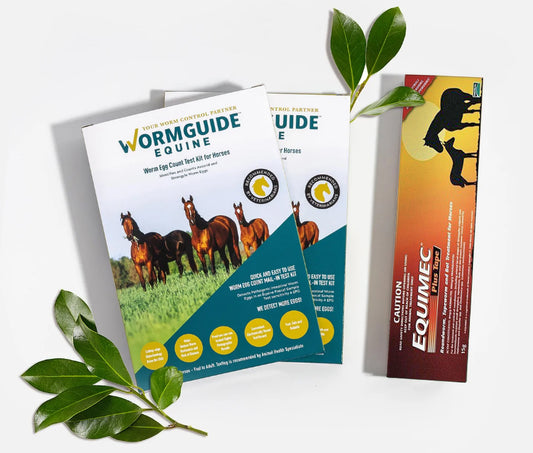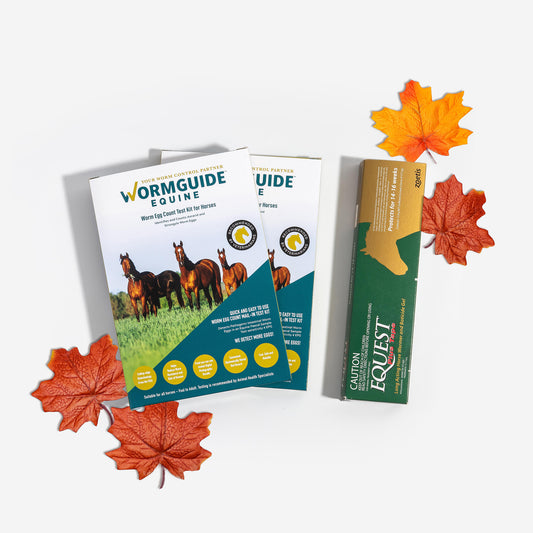Australian summers are HOT. Strongyle horse worms do not like very hot summer temperatures.
Because they die!
Virtually 100% of horses are infected with small strongyle (cyathostomin) worms. You can never get rid of them but you can be tactical about timing de-worming treatments for the health and welfare of your horse or herd.
As no new worming drug classes are likely to be developed for use in horses, adopting best worm control practices is crucial. Current recommendations promote a smarter and more sustainable use of our limited worming products because 60 years of worming horses too much is the major cause of life-threatening drug resistance.
Where are we today?
Glad you asked.
In a state of crisis with the worming drugs available. It`s a global phenomenon and that includes here in Australia. The more research and studies conducted, the more evidence for drug resistance in horse worm types across Australia.
The old way of worming horses is not working!
So new strategies are needed.
The AAEP guides the world`s horse worm control decisions. In response to this need, the AAEP have produced a comprehensive set of recommendations based on scientific research and new knowledge to develop improved strategies for worm control in your horses.
The need for worming horses is not the same throughout the year. Recommendation is to decrease treatments when climate conditions are not so good for the survival of worms on pasture.
Get the basics of worm control down pat
First and foremost, think about why you worm (deworm, de-worm or drench) adult horses. Best practice worm control for adult horses (over 3 years) is based on each horse`s strongyle faecal worm egg count level.
Why do you de-worm:
- Achieve a lower infection pressure on pasture.
- Reduce egg output on pasture for a period of time
- Reduce the risk of disease.
Consider scientific evidence:
- You can not achieve a state of worm-free - it`s impossible, misguided and not the goal.
- Every horse, every property and every situation is going to be different.
- All adult horses (over 3 years) are not the same, they should not receive the same worm control treatment.
Understand egg counts
- All egg count techniques are not created equal.
- Accuracy and precision are important performance parameters.
- Precision has the largest implication for classifying your horse`s egg shedding level(low, moderate, high) for a tailored control strategy.
- Automated faecal egg counting techniques perform with higher precision than the very old manual microscope techniques.
- Egg counts do not tell you how many worms your horse has.The number of eggs counted in a poo sample does not relate to the number of worms. Discover the 4 reasons why here
- Egg counts are poor diagnostic tools for worm involvement in clinical disease. They reflect the presence of adult strongyle worms but not the pathogenic larval stages that don`t lay eggs yet.
- Egg counts remain the foundation of good evidence-based worm control.
- With more and more wormer resistance across the world and here in Australia emphasis on accuracy and precision is more important than ever!
Get guidance
Veterinarians who’ve been trained in modern management of horse worms understand the:
- Epidemiology (risk factors on your horse property)
- Worm life cycles
- Effects of your regional climate
- Fight against worming drug resistance.
Vets who have knowledge of the up-to-date guidelines can help you transition and assemble a smarter customised worm control program that works for your horse/s on your horse property.
There is no such thing as a “one size fits all” program.
Save money during summer
Be tactical about timing treatments. It doesn`t make sense to waste money and worming products during a very hot summer. Let the climate kill the worms on pasture. Hot weather lessens infective worms entering your horses.
- Take advantage of hot summers or drought to rapidly kill strongyle worms on pasture.
- Avoid or limit treatments during hot summer months (time of low refugia), in order to reduce the development of worming drug resistance.
- Little is gained by worming your horse (i.e hot summer) if your horse is not showing any clinical symptoms of worm-related disease.
- The majority of horses are low egg shedders. Repeated treatment of horses with low or 0 egg counts every 2-3 months accomplishes little to improve their health and wastes money but it does promote drug resistance.
Why worms run out of energy and die
Most (90%) of the small strongyle worms live on pasture and their level of activity depends on the temperature. When conditions are really hot they have difficulty surviving and that achieves lower infection on pasture.
- It takes a lot energy for worms to wriggle, swim and move up on the grass and wait for a horse to eat them.
- Prof. Martin Nielsen explains that strongyle worms hatch from their eggs with an energy lunch box. Carbohydrate energy is stored in their intestinal cells. When it`s hot they use up their energy resources very quickly. They must be eaten by a horse, if they don`t they die.
- Unless there`s a clear indication to do so worming adult horses in the extreme heat of summer encourages drug resistance and is not recommended in the AAEP guidelines.
- But if your horse is showing evidence of worm-related disease during the times of the year when worming treatments are not recommended (i.e. hot summers), then your horse should be treated.
Take advantage of temperature to kill the worms

Strongyle eggs hatch and develop into infective larvae under conditions of moderate temperature and moisture. They cannot reproduce effectively under hot conditions. The longevity of strongyle eggs and larvae on pasture is facilitated by summer temperature extremes. Climate influences (in your region) is crucial when designing worm control for your horse or herd.
- There is no development above 40°C. Worm eggs and larvae die rapidly. Intact poo balls may be moist enough to survive for a short time.
- Temperature range 33-40°C eggs hatch rapidly (less than a day) but die quickly. May survive for a few weeks inside intact poo balls.
Delay life-threatening resistance
Drug resistance is a natural and inevitable consequence of drug treatment. De-wormer resistance is slow to develop in equine worms; it takes decades to show resistance. And since horses have been wormed too much for too long, worms are resistant to the worming treatments that could once kill them.
The goal of any worm control program is to achieve a meaningful delay in the development of drug resistant worms and gain good worm control. The need for worming horses is not the same throughout the year.
- Decrease treatments when climate conditions are adverse (hot summer) for worm survival on pasture and / transmission.
- Concentrate drug treatments when the local climate favours worm transmission. Usually Spring and autumn in most climates.
- Reduce risk of infections when pasture egg contamination is prevented or limited in spring and autumn.
- Change to a more surveillance-based treatment approach to reduce treatment intensity.
- Know the egg shedding level of individual horses by testing with the Super Surveillance faecal egg count
- Use the Super Surveillance FEC to properly develop any worm control program.
- Keep frequency of drug treatments at a minimum when pasture refugia is low (e.g., during hot summers and during droughts).
- All adult horses should benefit from a basic foundation of one or two treatments per year.
- Basic foundation treatment is a control measure that is applied equally to all horses on the farm to minimise pathogenic worms. At maximum treatments could be administered twice annually, at regular, 6 month intervals.
- Determine if your horse requires additional treatment/s beyond foundation worming with the Super Surveillance Egg Count Test to reduce the number of strongyle eggs on pasture. 20% of horses shed 80% of the eggs.
At WormGuide, our mission is simple: help all horses live their healthiest, happiest lives.
Embrace the current guidelines and the improved automated egg count technology and you`ll be well on your way to building a tailored worm control program that works for your horse or individuals in your herd.
A simple improvement like properly timed treatment during the year can help slow the natural progression of life-threatening resistant worms, yet provide protection for your horses.
Did you know WormGuide automated egg counts also use a much larger sample of manure (10 times more), in comparison to the old McMaster microscope method. This additional difference lies at the heart of its superior performance over McMaster.
Our herd of WormGuiders are passionate about giving their horses the very best: whether it`s meeting the demand for more reliable and precise worm egg count testing or timing worming treatments based on the best available scientific evidence and knowledge.
Join our herd of informed, empowered and connected WormGuiders today.










